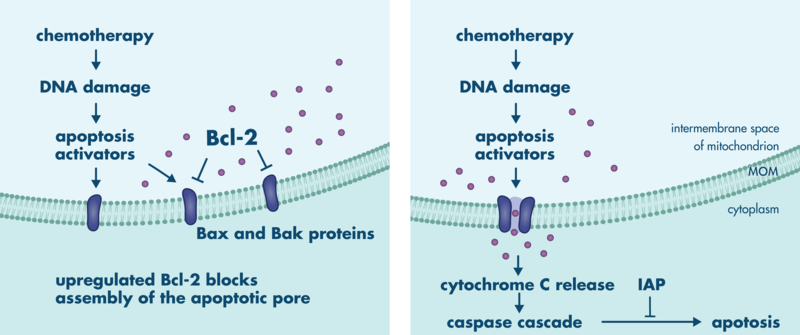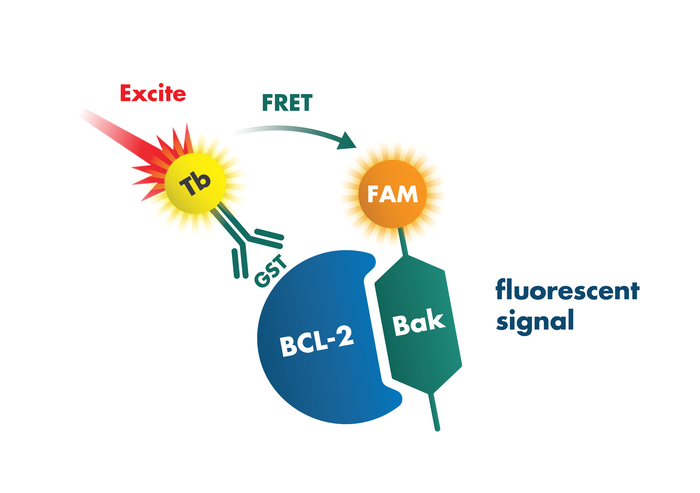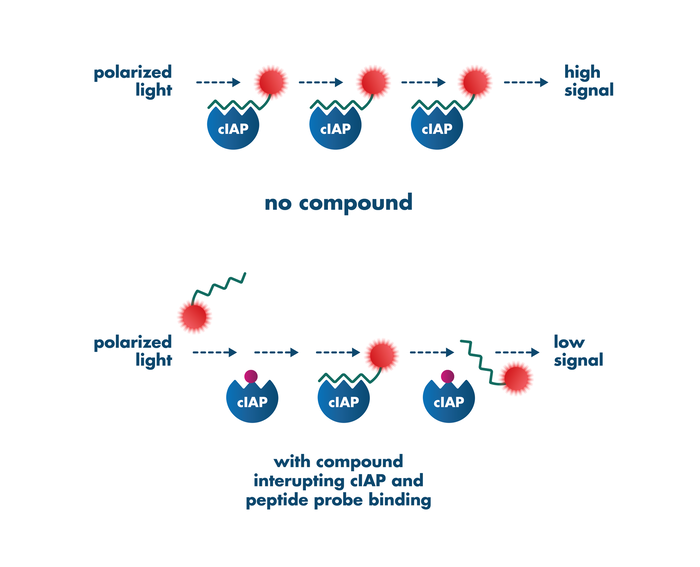Apoptosis Pathway Assay Services
Cancer cells have to overcome a variety of protective mechanisms of the body to form tumors. One of them is apoptosis which is a highly regulated form of programmed cell death that is needed to remove damaged or aged cells. Modulating apoptosis has been exploited to fight malignancies for example by overcoming treatment resistance.
Reaction Biology offers apoptosis assays for the investigation of test molecules targeting the apoptosis pathway. The apoptosis assay technology measures the binding of the apoptotic protein such as BCL2 to a substrate peptide such as BAK. The interference of the binding by a test molecule can be detected via a fluorescence readout.
- Low scale, large scale screening and high-throughput options as well as hit to lead screening options are available
- Please ask us for apoptosis assay development and custom-tailored screening options
- The apoptosis pathway proteins are produced in house and available for purchase





